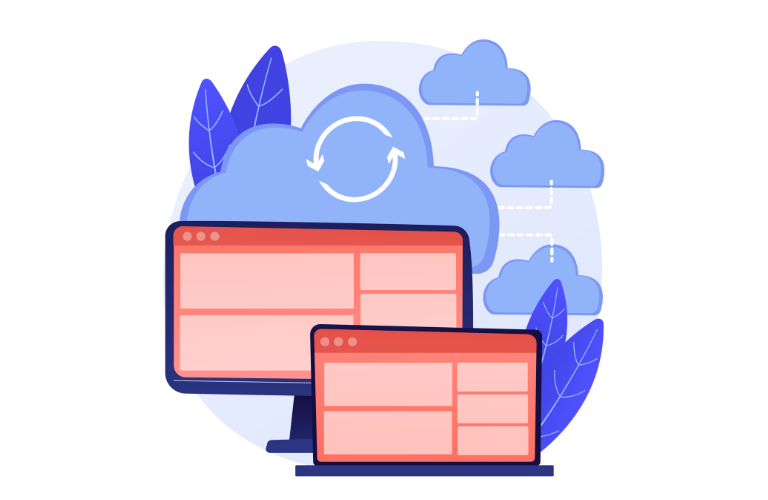Laravel Herd is revolutionizing how developers approach PHP and Laravel projects with its promise of a fast PHP development environment. If you’re tired of wrestling with slow setups, complex configurations, or inconsistent team environments, Herd might just be your new best friend.
Designed specifically for Windows (with macOS support too), this blazing-fast, native tool bundles everything you need—PHP, Nginx, Node.js, and more—into one streamlined package. Whether you’re a solo coder or part of a team, Herd cuts through the clutter, letting you focus on what matters: building awesome web applications.
Let’s dive into why over 40,000 developers swear by Herd daily, how it works, and how you can harness its power to supercharge your workflow. From installation to real-world use cases, this article covers it all with actionable tips to solve common pain points like slow performance or setup headaches.
Table of Contents
What Makes Laravel Herd a Game-Changer?
Laravel Herd isn’t just another development tool—it’s a fast PHP development environment crafted to simplify your life. Imagine skipping hours of manual setup for PHP versions, databases, and web servers. Herd delivers that in minutes. It’s lightweight, user-friendly, and optimized for Laravel, though it works for general PHP projects too.
The magic lies in its all-in-one approach. Out of the box, you get PHP (with multiple version support), Nginx, Node.js, and tools like Composer and the Laravel installer. For power users, Herd Pro adds database management, caching services, and debugging tools tailored to Laravel. It’s like having a Swiss Army knife for web development—everything you need, right at your fingertips.
How Laravel Herd Works
Herd automates the grunt work so you don’t have to. After a quick install, it routes all *.test domains to your local sites, handles environment variables, and ensures consistency across teams. No more “it works on my machine” excuses. It’s leaner than Docker and faster than Homestead, making it perfect for small to mid-sized projects where speed trumps complexity.
For example, need PHP 8.2, MySQL, and Redis for your next app? Herd sets it up in a snap. You can tweak settings via a simple interface or terminal commands, and it integrates seamlessly with Laravel Forge for deploying to remote servers. It’s development made easy.
Key Features of Laravel Herd
Here’s why Herd stands out as a fast PHP development environment:
- Lightning-Fast Setup: Install and start coding in under 10 minutes—no manual service juggling required.
- Integrated Services: PHP, Nginx, Node.js, MySQL, Redis, and Mailcatcher come pre-configured.
- Customization: Switch PHP versions or tweak database settings with ease.
- Performance Boost: Lightweight design outperforms heavier tools like Homestead.
- Team-Friendly: Consistent setups eliminate version mismatch woes.
Picture this: You’re on a tight deadline, and your client needs a Laravel app with caching. With Herd, you spin up Redis and start coding—no extra downloads, no fuss.
How to Install Laravel Herd: Step-by-Step
Getting started with this fast PHP development environment is a breeze. Here’s how:
- Download Herd: Grab the installer from the official Herd website.
- Run with Admin Rights: On Windows 10 or higher, launch the installer as an administrator to let HerdHelper update your hosts file.
- Verify Setup: Open your terminal and run these commands to confirm:
herd --version
php --version
laravel --version
composer --version
node --version - Start Coding: Create a new Laravel project with laravel new myapp and visit myapp.test in your browser.
That’s it! No service conflicts, no hours lost. If it’s not your vibe, uninstalling Herd reverts your system cleanly.
Real-World Use Case: Speeding Up Development
Let’s say you’re building an e-commerce site with Laravel. You need PHP 8.1, MySQL for product data, and Redis for caching cart items. Without Herd, you’d install each component separately, configure Nginx, and debug connection issues—hours of work. With Herd, it’s different:
- Run herd php 8.1 to set your PHP version.
- Use herd services start mysql redis (Pro feature) to fire up databases.
- Code your app and test at shop.test.
A team I worked with cut their setup time from two hours to 15 minutes using Herd. That’s time back for building features, not fighting configs.
Time-Saving Shortcuts with Herd
Herd’s terminal commands are a developer’s dream for efficiency. Here are some shortcuts to master this fast PHP development environment:
- herd link: Links a site folder to a *.test domain instantly.
- herd php 7.4: Switches PHP versions on the fly.
- herd expose: Shares your local site globally via Expose.
- composer create-project laravel/laravel myapp: Sets up a new project in seconds.
These commands shave minutes off repetitive tasks, letting you focus on coding over configuring.
Benefits of Using Laravel Herd
Why choose Herd? It solves real developer pain points:
- Boosted Productivity: Quick setups mean more coding time. A five-person team I know slashed environment prep by 50% after switching from Docker.
- Consistency: Identical setups across machines prevent version chaos.
- Beginner-Friendly: No steep learning curve—just install and go.
For instance, a junior developer can jump into Laravel without mastering server management, thanks to Herd’s simplicity.
Laravel Herd vs. Other Tools
How does this fast PHP development environment stack up?
- Vs. Docker: Docker’s robust but heavy. Herd’s lighter and simpler for Laravel-focused workflows.
- Vs. Homestead: Homestead is feature-rich but slow. Herd prioritizes speed and ease.
- Vs. Valet: Valet’s great for macOS, but Herd offers a fuller stack with databases included.
If you need a lean, fast PHP development environment without Docker’s overhead, Herd wins.
Troubleshooting Common Herd Issues
Even the best tools hiccup. Here’s how to fix common Herd snags:
- Slow Performance: Windows Defender might scan Herd’s folder (%USERPROFILE%.config\herd). Exclude it in Defender settings for a speed boost.
- PHP Conflicts: Run herd php –list to check versions, then herd php 8.0 to switch.
- Database Errors: Verify your .env file matches Herd’s MySQL credentials (default: root, no password).
One user I helped found Herd lagging. Excluding the config folder in Defender fixed it instantly.
Optimizing Herd for Peak Performance
Want to squeeze more out of this fast PHP development environment? Try these:
- Close Background Apps: Free up RAM for smoother operation.
- Update Regularly: Run herd update to grab performance tweaks.
- Use SSDs: Store projects on solid-state drives for faster file access.
A developer I know moved Herd to an SSD and saw page loads drop from 2 seconds to under 1—small tweak, big win.
Why Herd Excels for Laravel Developers
Herd’s integration with Laravel’s ecosystem—like Forge and the installer—makes it a natural fit. Its lightweight design avoids the bloat of virtual machines, and its Pro version adds testing tools that debug Laravel apps effortlessly. Over 40,000 developers use it daily because it delivers what it promises: a fast PHP development environment that gets out of your way.
Conclusion
Laravel Herd is the ultimate fast PHP development environment for anyone who values speed, simplicity, and productivity. From its quick setup to its robust features, it’s built to streamline Laravel and PHP workflows. Whether you’re battling tight deadlines or juggling team projects, Herd empowers you to code smarter, not harder.
Ready to give it a shot? Download it from Herd’s site and see the difference.
FAQs
1. What is Laravel Herd and why should I use it?
Laravel Herd is a fast PHP development environment designed to simplify local development for Laravel and PHP projects. You should use it because it offers a quick setup, pre-configured services like PHP and MySQL, and boosts productivity by cutting down configuration time.
2. How fast is Laravel Herd compared to other tools?
Laravel Herd is lightning-fast compared to tools like Homestead or Docker. Its lightweight design skips heavy virtual machines, letting you set up a fast PHP development environment in minutes instead of hours, perfect for quick project starts.
3. Can I use Laravel Herd for non-Laravel projects?
Yes! While optimized for Laravel, Herd works as a fast PHP development environment for any PHP project. You can use its PHP, Nginx, and Composer features for general web development too.
4. What do I need to install Laravel Herd?
You need Windows 10 or higher (or macOS) and admin rights to install Herd. It’s a simple download from the official site, and it sets up your fast PHP development environment without extra software hassles.
5. How do I fix slow performance in Laravel Herd?
If Herd feels sluggish, exclude its config folder (%USERPROFILE%.config\herd) from Windows Defender scans. This tweak ensures your fast PHP development environment runs smoothly by avoiding unnecessary slowdowns.
6. Is Laravel Herd free to use?
Yes, the base version of Laravel Herd is free and includes core features like PHP and Nginx. For advanced tools like database management, Herd Pro is a paid upgrade to enhance your fast PHP development environment.
7. How does Laravel Herd compare to Docker?
Laravel Herd is simpler and lighter than Docker, making it a faster PHP development environment for Laravel projects. Docker offers more isolation but requires more setup and resources, while Herd prioritizes speed and ease.




